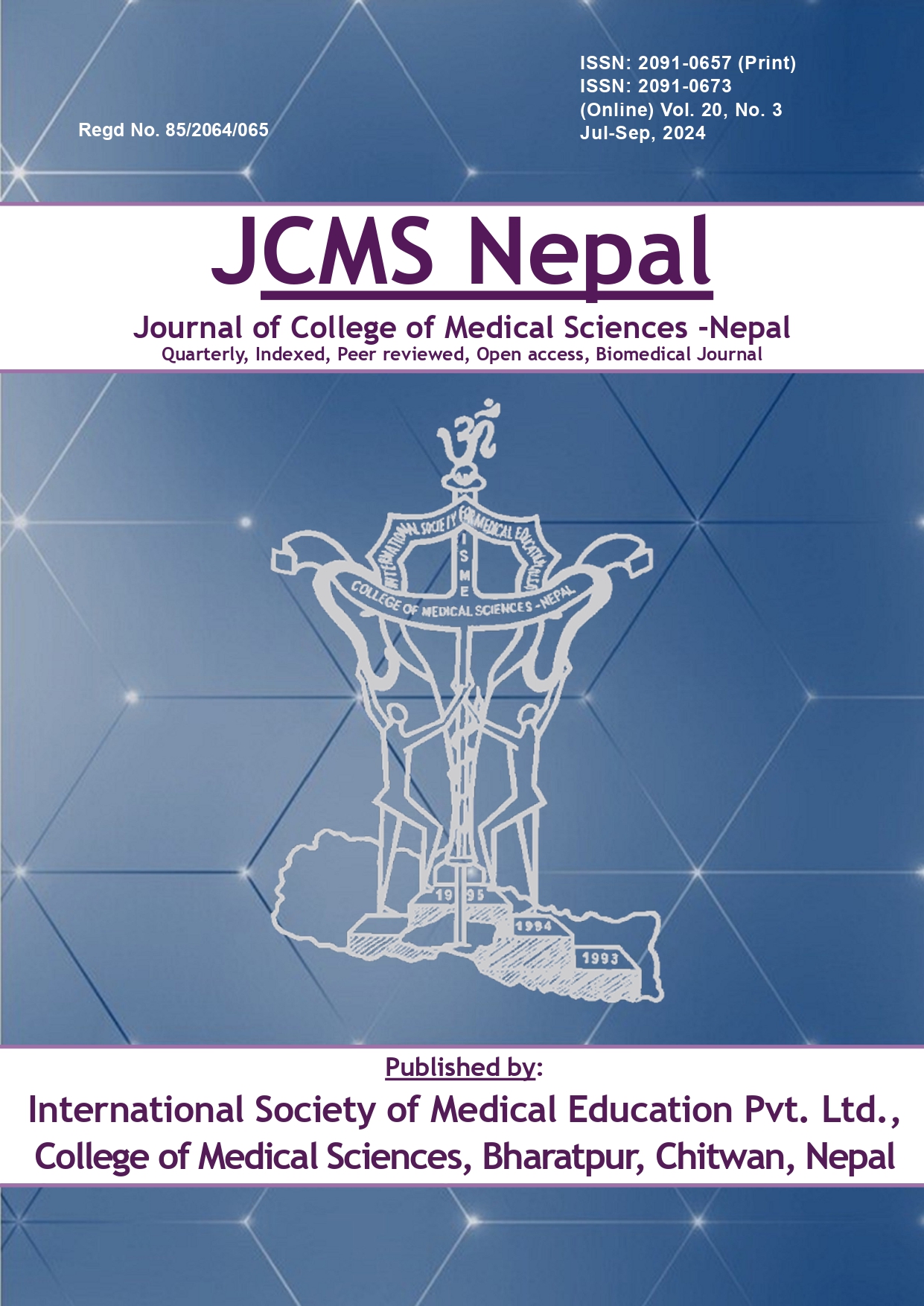Clinical Profile and Outcome of Twin Babies Delivered at a Tertiary Care Center in Eastern Nepal
DOI:
https://doi.org/10.3126/jcmsn.v20i3.69808Keywords:
Pregnancy Outcome, Twin Pregnancy, Tertiary care centers, Nepal Neonatal morbidity, Maternal Health ServiceAbstract
Introduction: Twin pregnancies are often associated with higher risks of complications for both the mother and the neonates, particularly in resource-limited settings. This study was conducted at a tertiary care center in Eastern Nepal to assess the clinical profile and outcomes of twin pregnancies.
Methods: A descriptive cross-sectional study was carried out in the department of Pediatric and neonatology at Nobel Medical College Teaching Hospital, Biratnagar, Nepal over the period of 6 month (December 2023 to May 2024). Total of 32 twin pregnancies of gestational age of ≥28 weeks, where both twins were alive at delivery were included. Data were collected on maternal and neonatal characteristics, including birth weight, gestational age, Apgar scores, and clinical outcomes. Statistical analyses were performed to compare the outcomes between the first and second twins.
Results: In the present, study total of 32 eligible twin were analyzed. The majority of twins were (53.1%) delivered between 32 to <37 weeks of gestation rest 46.87% delivering between 28 to <32 weeks. The average Apgar scores were 6.5 at 1 minute and 8.6 at 5 minutes. The most common clinical feature seen in twin neonates was lethargy which was seen in 32 neonates (50%). NICU admission was required for 70.3% of the neonates. There were no significant differences between groups twin 1 and twin 2 in most health indicators, such as clinical symptoms, hemoglobin, PCV, serum calcium level, jaundice, TTTS, chest X-ray findings, NICU admissions, or overall outcomes (P > 0.05). However, twin 1 had a higher rate of neonatal sepsis (P = 0.048). notable difference was observed in the incidence of neonatal sepsis between the first and second twins, with the first twin being more affected. Neonatal mortality rate in twin in the present study was 7.8%.
Conclusion: Twin pregnancies have high incidence of preterm delivery and low birth weight. Requirement of NICU care is more in case of first twin.
Downloads
Downloads
Published
How to Cite
Issue
Section
License
Copyright (c) 2024 The Author(s)

This work is licensed under a Creative Commons Attribution-NonCommercial-NoDerivatives 4.0 International License.
This license enables reusers to copy and distribute the material in any medium or format in unadapted form only, for noncommercial purposes only, and only so long as attribution is given to the creator.




